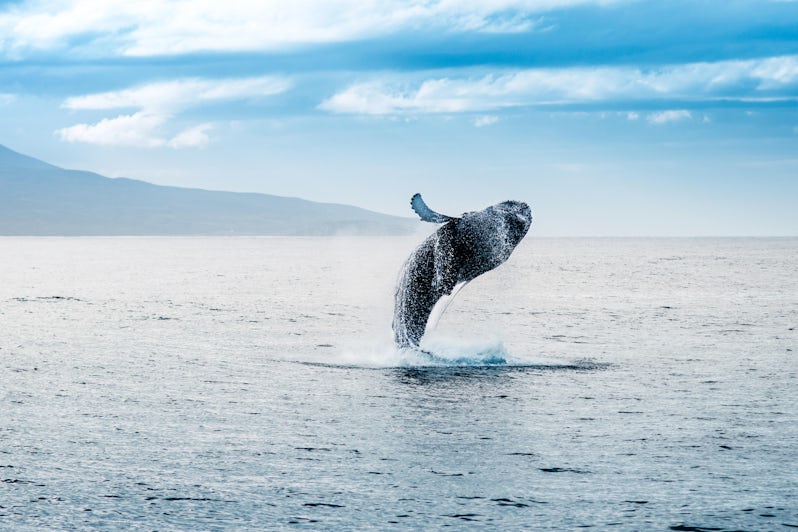
11 Best Whale Watching Cruise Shore Excursions


It's exhilarating being surrounded by majestic whales in their natural habitat. On whale watching cruise excursions, you can get up close to these beautiful beings and witness them breeching, foraging and caring for their young.
In the winter months, whales travel thousands of miles to warmer waters to reproduce and nurture their babies. There are amazing places around the world where you can see these mammals, all within easy reach if you are cruising. Sure, you might see the tail end of a breach or a glimpse of a fin from the comfort of your deck, but the best way to experience the sheer presence and beauty of these creatures is on a whale watching shore excursion.
Most of the excursions last anywhere between two to five hours, have expert narration and are onboard catamarans with indoor and outdoor seating. Some of them are equipped with a hydrophone so you can hear the underwater songs of the humpback whales.
For your whale watching outing, bring sunblock, water, a hat, binoculars and your cameras to capture the unforgettable moments. If you are prone to seasickness, make sure to take a motion-sickness remedy and stay at the back of the vessel.
Here is a list of popular shore excursions from ports across the globe for incredible whale watching experiences.
On This Page
- Humpback Whale Migration in Maui, Hawaii
- The Killer Whales of Victoria, British Columbia
- Giant Blue Whales in Azores, Portugal
- Whale Watching Fjord Cruise in Trondheim, Norway
- Meet Resident Sperm Whales in Dominica (Caribbean)
- Respecting the Whales in Reykjavik, Iceland
- Spotting Arctic Beauties in Ilulissat, Greenland
- Right Whales in Kangaroo Island, Australia
- Social Pods in Juneau, Alaska
- Whale Sharks in Cabo San Lucas, Mexico
- Whale Watching in Seattle
1. Humpback Whale Migration in Maui, Hawaii

Maui is undoubtedly one of the best places to see humpback whales. The second-largest Hawaiian island is known for its rugged mountains, cascading waterfalls and golden beaches. But the waters surrounding it are equally enticing, with many opportunities to spot North Pacific humpback whales on their migratory route as they travel from the cool, feeding waters of Alaska to the warmer waters of Hawaii during winter to breed.
The Hawaiian Islands Humpback Whale National Marine Sanctuary spans 1,400 square miles and begins at the shores of Maui, Kauai, Oahu, Kona and Kohala; it protects more than 21,000 humpbacks. These whales make an annual round trip journey of about 6,000 miles -- considered one of the longest of any mammal, and scientists estimate that up to 12,000 whales (nearly half of the population of North Pacific humpbacks) come to the archipelago.
Ranging anywhere from 40 to 50 feet long, these leviathans grace the Hawaiian waters between mid-December to late April. Beyond the sound of the waves and the sea birds, you can hear the haunting songs that male humpback whales use to navigate new locales.
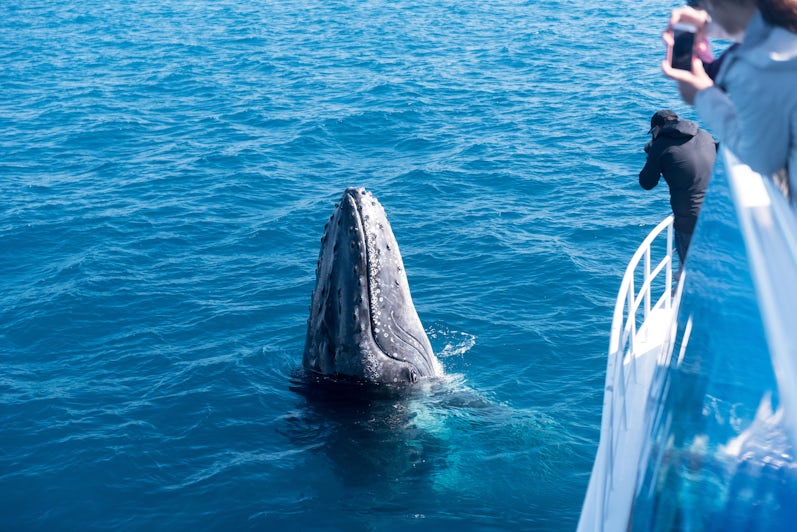
On your cruise to Hawaii, sign up for a whale watching excursion in Maui with the cruise line or go with one of several tour operators, like PacWhale Eco-Adventures leaving from Lahaina Harbor (a 40-minute drive from the port) and Ma'alaea (15-minute drive from the port). Tour operators are so confident that cruisers will spot whales that they offer money back guarantees if there are no sightings.
2. The Killer Whales of Victoria, British Columbia
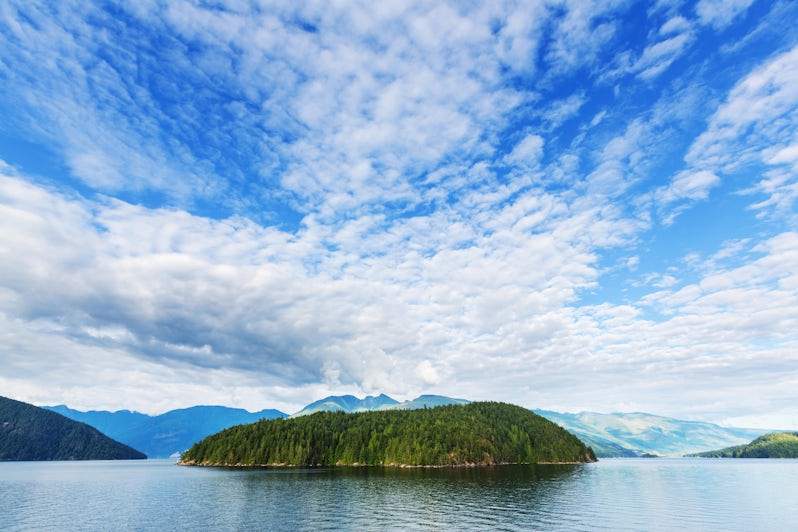
The waters surrounding Victoria, the capital city of British Columbia, see at least four kinds of large marine mammals, and popular among them are orcas and humpback whales. Orcas, often referred to as killer whales, are actually in the dolphin family. The transient killer whales can be spotted year-round as they hunt for seals, Steller sea lions and porpoises. Though they are around all year, the best chance to spot pods of the Southern resident killer whales is in the summer months, when they come to the southern tip of Vancouver Island to feast on Chinook salmon.
The ideal times to catch sightings of humpback whales is between May to June and September to October during their annual migration. Pacific gray whales travel through the Salish Sea to reach Alaska and can be seen March to November.
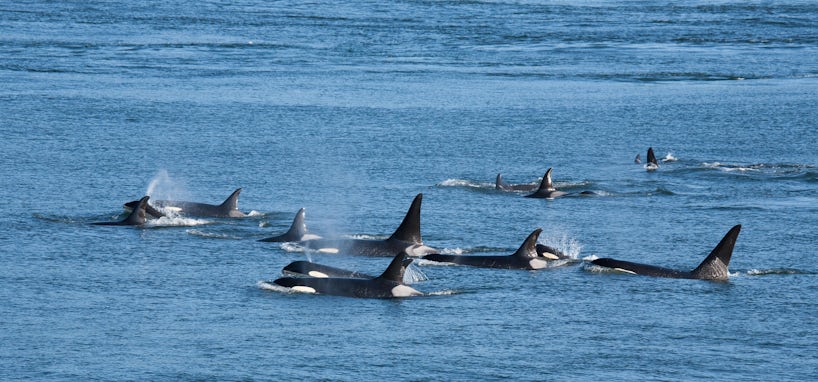
Most whale watching expeditions leave from Victoria's downtown harbor to go around the Gulf and Washington's San Juan islands, which takes around three hours. You can take a Zodiac or opt for more luxury in a cruiser or a yacht. Eagle Wing Tours and Prince of Whales Whale & Marine Wildlife Adventures are among the top whale watching tour operators in Victoria.
3. Giant Blue Whales in Azores, Portugal
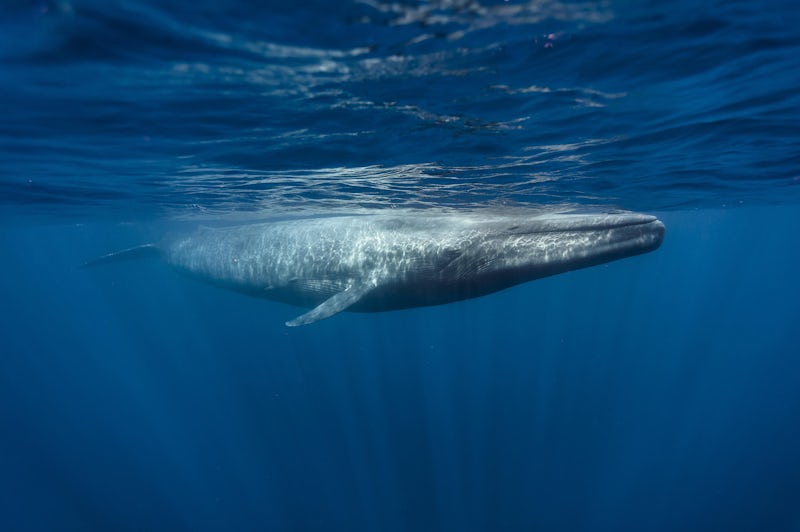
Located halfway between North America and Europe, Portugal's Azores archipelago is right along the migratory path of many baleen whales, the biggest animals on the planet. Catch sight of nature's most brilliant spectacle -- the blue whale, weighing up to 200 tons and reaching a length of 100 feet -- in the waters around Azores in April and May.
From above water, these beauties look true blue, but their skin has a mottled blue-gray sheen when they come up for air. They can hold their breath for up to 20 minutes, so be prepared to wait to see them reappear at the surface. These gigantic marine mammals spend summers feeding in the polar waters and embark on a lengthy journey toward the equator in the winter.
If you are lucky, you might see a mother with a baby, weighing up to 3 tons and already stretching to 25 feet. Hunting for whale oil almost caused these creatures to go extinct, but they are now showing signs of a slow recovery. Witnessing them in the wild is an experience that should be on any marine-lover's bucket list.
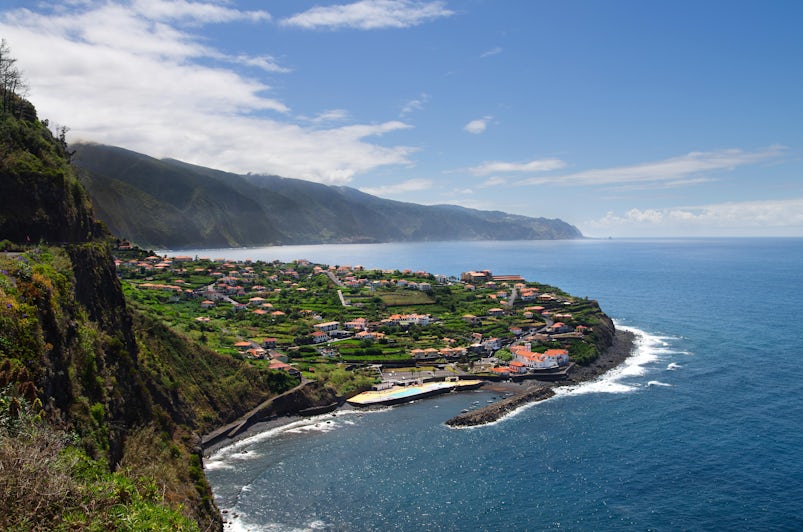
A number of outfitters offer guided boat tours, most of them departing from Ponta Delgada (nicknamed the Green Island), the capital of Azores on the island of Sao Miguel. On your tour, don't expect to find these whales singing. Although blue whales are some of the loudest animals -- they emit low-frequency rhythmic throbbing sounds to navigate the deep waters that measure up to 188 decibels; enough to overpower the sound of a jet engine -- their vocalizations are below the threshold of human perception. However, those witnessing blue whales on a whale watching excursion can hear low rumbling grunts, moans and clicks.
4. Whale Watching Fjord Cruise in Trondheim, Norway

While the northern lights and sublime fjords attract cruisers to Norway, the country's waters teem with marine life worth experiencing on a cruise shore excursion.
Every year, humpback whales make the return journey from the warm waters of the Caribbean to the icy waters around Iceland and Norway. By the time they reach the Scandinavian country, their babies have grown up and both the moms and babies are hungry to feed in the nutrient-rich waters.
While most whale watching tours are out on the open sea with waves to contend with, fjords offer a more serene environment to see these creatures up close. As Norway's third-longest fjord, Trondheim attracts humpback whales and killer whales.
5. Meet Resident Sperm Whales in Dominica (Caribbean)
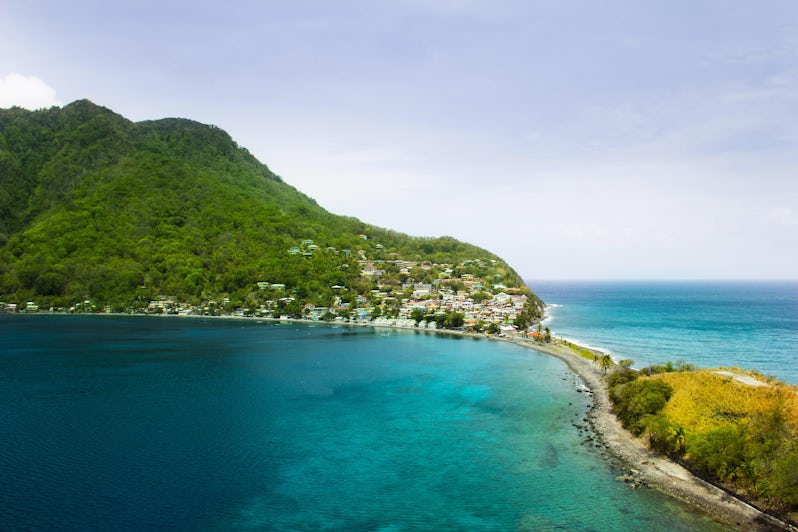
Off the western shore of Dominica, more than 200 sperm whales live year-round. Most of these are females using the calm waters to give birth. The area is sheltered from wind and waves by the steep mountains of Dominica, which create sheer underwater drop-offs big enough for whales to dive and sheltered bays calm enough for them to rest and raise their young.
These whales, easily recognizable for their massive heads, are the largest-toothed whales on the planet. They love to deep dive (more than 6,000 feet) to hunt for their favorite foods -- colossal squid and octopus -- staying underwater for up to 90 minutes.
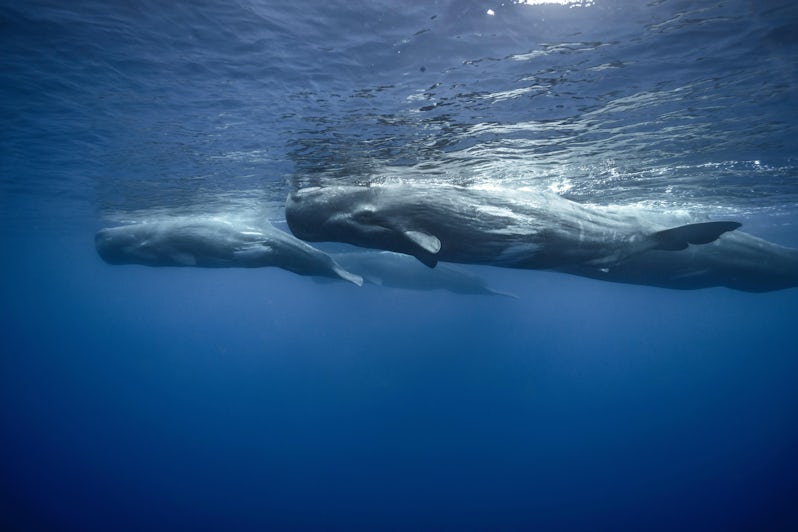
After foraging in the open ocean, males join the females from February to May to mate. The ideal time to see the resident pod of sperm whales is from November through May, where cruisers can also witness myriad other marine life from spinner and spotted dolphins to migrating humpbacks.
Whale watching tours operate from the port of Roseau, and whales can be spotted off Point Round, Scotts Head and Layou. Customize a trip with the Anchorage Hotel and Dive Center during your day trip.
6. Respecting the Whales in Reykjavik, Iceland

Iceland owes its rich culture and economy to the whales. Though it recently decided to forgo the International Whaling Commission's moratorium on whaling, a majority of the population still considers commercial whaling an ancient tradition that needs to go.
A lot of the vessels that were once used for whaling are now used for whale watching excursions. Faster catamarans are also used to get to the whales quicker. Whales spotted in the waters around Reykjavik are minke and humpbacks, with pilot and fin whales making occasional appearances.
Summer is the ideal time to watch the acrobatics of the humpbacks, as they breach, slapping fins and tails, during their annual migration. Warmer weather also means you can spot plenty of puffins that take up residence on rocky outcroppings along the shore.
Whale Watching Tour from Reykjavik has trips leaving for Faxafloi Bay and lasts from two to three hours depending on the vessel and animal behavior. You can also cruise the bay on a rigid inflatable boat (RIB) on a two-hour, small-group expedition.
7. Spotting Arctic Beauties in Ilulissat, Greenland
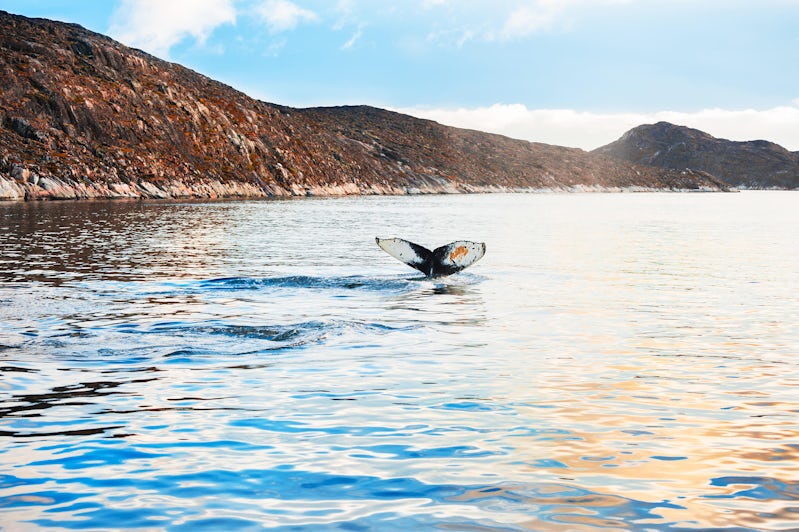
In the summer months, humpback whales, fin whales and minke whales can be seen frolicking and feasting in Greenland's waters (also teeming with large groups of tasty krill and fish). The whales gravitate toward fjords where they can fatten up for their long winter journey south.
The town of Ilulissat provides opportunities to cruise Disko Bay, where cruisers can catch sightings of whales with the most beautiful icy backdrops. Aside from the humpback and fin whales, sightings of Arctic whale species, such as narwhals, beluga whales and bowhead whales, are also possible.
The bowhead whale is known to live to be more than 250 years old and use their large skulls and thick bodies to break sea ice up to 7 inches thick. These whales can be spotted during the spring months before they leave for Canada in May. Tours run from May to October and operators pick up passengers at two points at the harbor -- on the south side close to Tankeraq and the Tourist Ponton on the north side.
8. Right Whales in Kangaroo Island, Australia
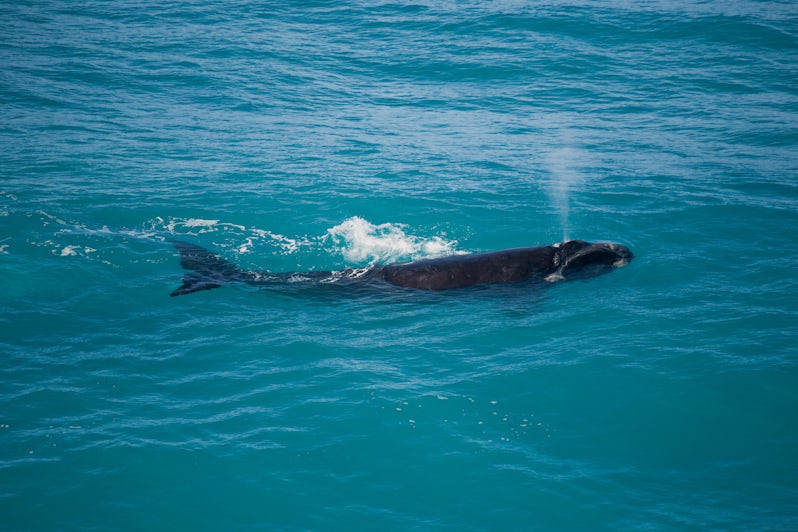
Kangaroo Island, Australia's third-largest island, is known for its dramatic landscapes, abundant wildlife and marine-rich waters. Southern right whales make a stopover near the island on their annual migration from May to October.
These whales get their name because they were considered the "right" whale to hunt during the whaling days, (they are slow swimmers, come close to shore and have a high quantity of oil). These days, this type of baleen whale is still slow, but that makes it especially fun to see them up close. They are known to be curious and playful, often coming right up to boats.
Kangaroo Island Ocean Safari offers a 75-minute coastal and wildlife tour, visiting places like Dolphin Cove, Kangaroo Head and Snapper Point where you can see whales along with a slew of other animals like dolphins, seals and seabirds.
9. Social Pods in Juneau, Alaska
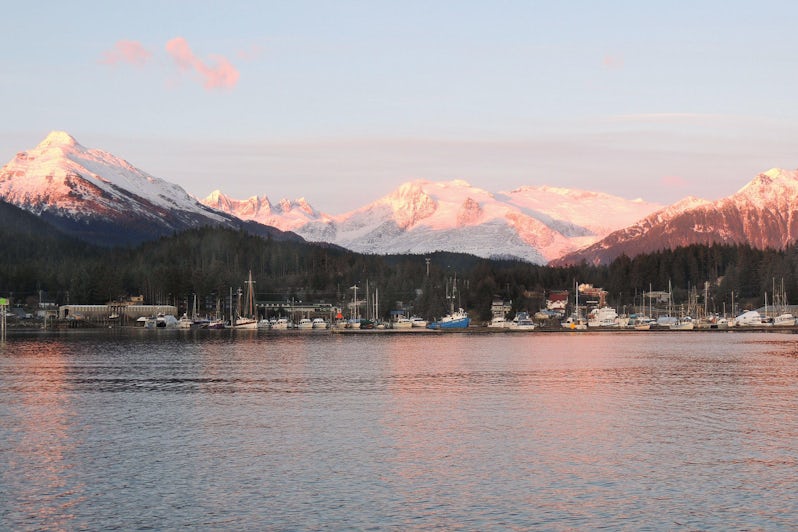
A short drive from the Juneau port takes you to Auke Bay, where tours offer an unforgettable whale watching experience in Southeast Alaska. The bay is brimming with a menagerie of wildlife, but the main attraction is the humpback whale. Visitors can also see orcas, Dall's porpoise, steller sea lions and harbor seals.
Most tours guarantee that you'll see at least one whale during your time on the water, but it's likely that you will see a lot more as cruise season (May through September) is the time they forage to bulk up for their migration. They feed by taking in large amounts of water and filtering it through the baleen plates for krill, herring and mackerel.
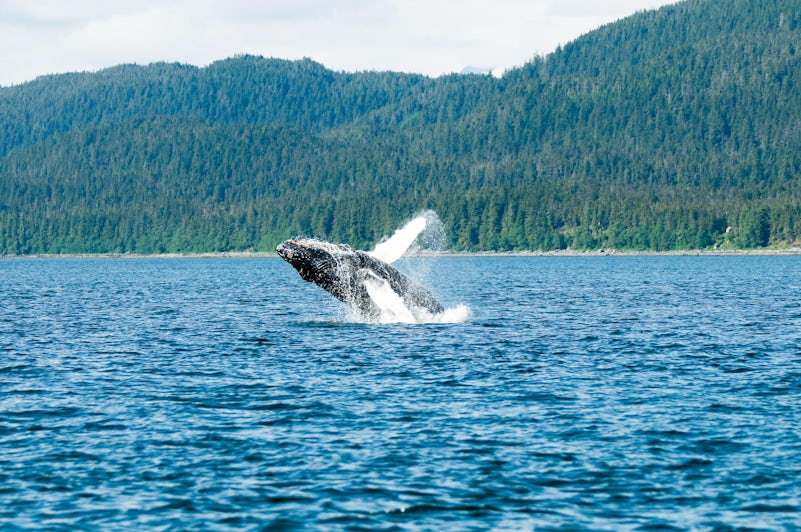
These social creatures also participate in cooperative fishing, where the pod's hunting members gather in a circle below the surface and swim upward in a spiral path, blowing bubbles and causing the fish and krill to scramble to the top, ready to be consumed.
Local tour operators, like the Juneau Whale Watching Company, offer whale watching tours on their own or in combination with the Mendenhall Glacier. Humpbacks whales are inquisitive beings and are known to approach, ride alongside or even go beneath the boat, so be prepared for the ride of a lifetime.
10. Whale Sharks in Cabo San Lucas, Mexico
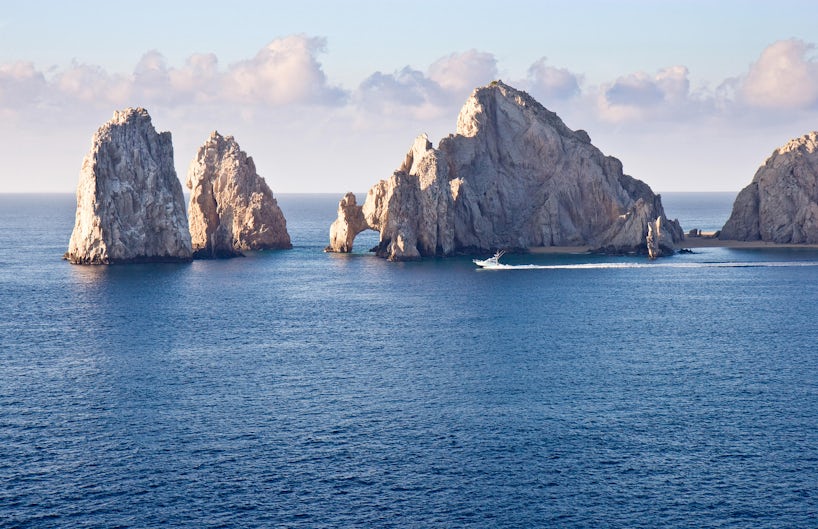
The Sea of Cortez, famously nicknamed as "the aquarium of the world" by conservationist Jacques Cousteau, is home to 800 species of fish and attracts megafauna, like whale sharks, humpback whales and gray whales.
Whale watching season in Cabo San Lucas begins in December and goes well into April, giving cruisers who are traveling in early spring a chance to see some of the whales that migrate to the warm waters of the Sea of Cortez and the Pacific waters along the Baja Peninsula.
The Sea of Cortez's main attraction is the whale shark. The dark blue/gray-colored elegant creature with a distinct pattern of white spots and stripes actually belongs to the shark family and is considered the largest fish in the sea. Similar to baleen whales, these docile creatures are filter feeders, filtering tiny plankton and fish eggs as they swim gingerly along the surface of the water with their giant mouths wide-open.
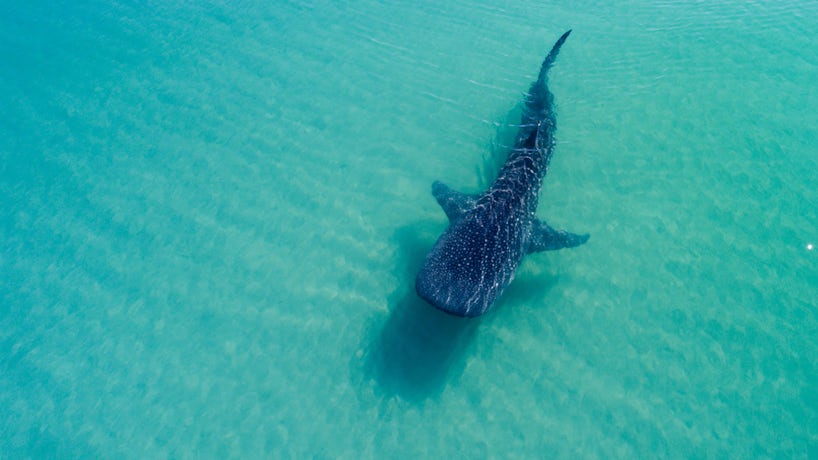
These sharks are protected and rules are in place to allow only a certain number of people near them on any given day. Be sure to book your excursion months in advance, and don't be surprised if the tour is canceled last minute due to wind.
Whale Watch Cabo runs 2.5-hour tours every day during the whale watching season, hosted by bilingual marine biologists. They pass the iconic arch, the sea lion colony, Lover's Beach and, of course, head out to find the whales and whale sharks.
11. Whale Watching in Seattle
Though it’s often used a gateway to cruises to Alaska, Seattle has its own share of natural bounty to explore. On a whale-watching excursion on the Puget Sound, witness its largest animals including humpback whales and orcas. The latter have become a symbol of Puget Sound and can be spotted year-round.
For a good shot of seeing multiple pods, book a tour during the spring and summer months. Other cetaceans like minke and gray whales visit Puget Sound on their annual migration between the Baja Peninsula and Alaska.
Cruise excursions go through the Strait of Juan de Fuca to the San Juan Islands in the north or head south towards Tacoma, depending on where the whales are most likely to be spotted. Popular tour operators like Puget Sound Express and Clipper Vacations leave directly from Seattle.